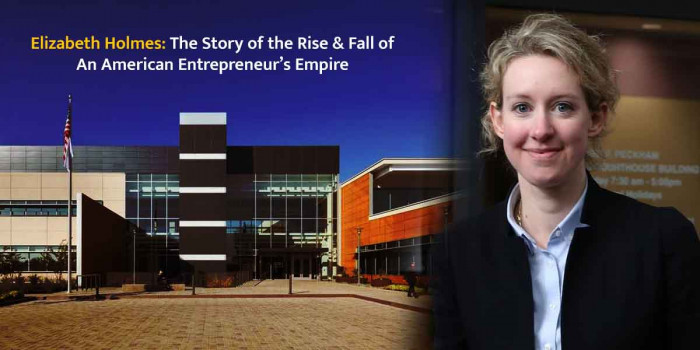An Insight Into The Human Life Of Amazon Rainforest
Amazon is one of the largest rainforests in the world. It is located in the Amazon basin of South America. The moist broadleaf f...
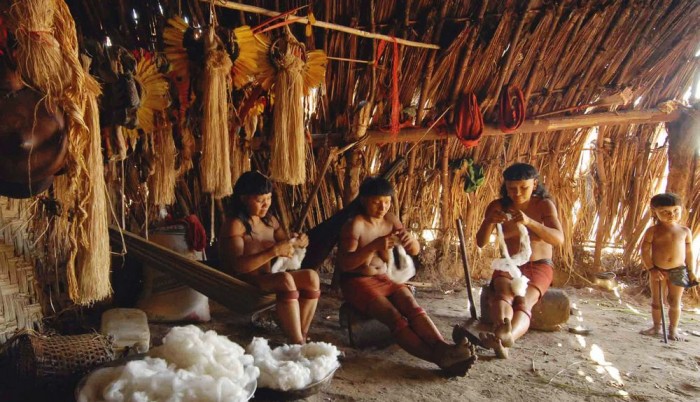
Amazon is one of the largest rainforests in the world. It is located in the Amazon basin of South America. The moist broadleaf forest covers seven million square kilometers. It plays a vital role in stabilizing the global climate and is thus termed as the lungs of the world. About 2.5 million insect’s species, tens of thousands of plants and approximately 2,000 birds and mammals live in this region.
This rainforest is the only source of food, medicine and materials that are essential for a living for many Amazon people. Many parts of the world also source lumber from Amazon Rainforest. Majority (60%) of the forest is contained in Brazil. This is followed by Peru with 13%, Columbia with 10% and minor portions in Bolivia, Ecuador, Venezuela, Guyana, French Guiana and Suriname.
Human Life in Amazon Rainforest
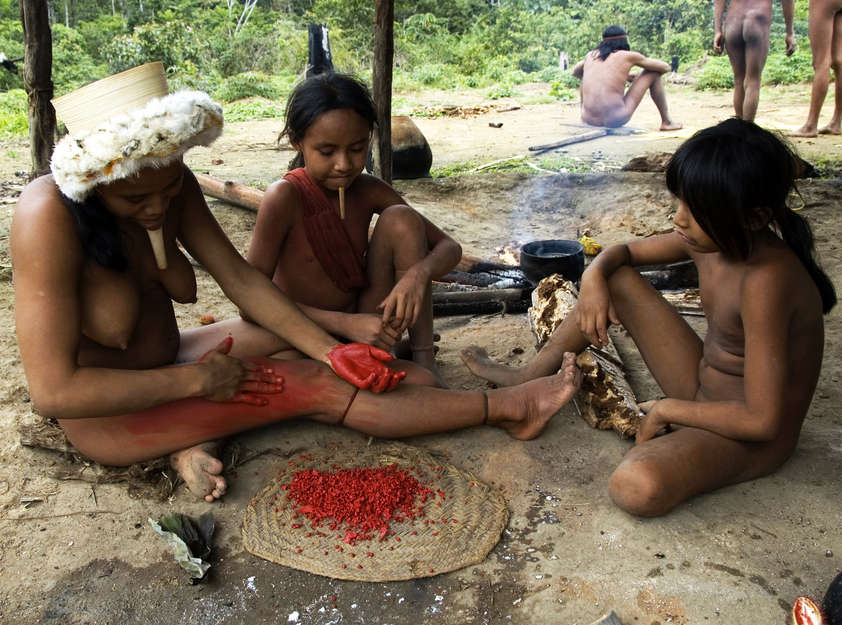
Amazon has a long history of human settlement. The first human settlements in the Amazon are estimated at 32,000 to 39,000 years ago. As against the popular belief, sizeable and sedentary societies existed in Amazon rainforest. The Brazilian Amazon alone is a home to 20 million, which includes 400 different indigenous groups.
The Amazon people living in the forest have interwoven their lives with the rich and complex natural tapestry of forest. Forests provide them with almost everything from food and shelter to tools and medicine. They also play a crucial role in people’s spiritual and cultural life.
These people have developed lifestyles that are cohesive with the benefits and constraints of rainforest. They cleared sections of rainforest for agriculture and produced pottery. They also managed the distribution of useful species in forests. Virgin Amazon was popularized because of the population crash which followed the arrival of Europeans in sixteenth century.
Studies suggest that 11.8 percent of the terra firme forests in Amazon have originated out of human activity. These ancient Amazonians were attuned with the ecological realities of environment. Rather than using the current cultivation techniques, they were sustainably able to manage the rainforests in coordination with fulfillment of their needs.
Many people lived around the Whitewater Rivers. This made most of their tasks easier like transportation, fishing and fertile soils for agriculture. However, these settlements were the first to be affected when the Europeans arrived. Europeans used the major rivers in Amazons as their passage to the forest interiors. The Amerindian population was reduced by 90 percent in the initial presence of Europeans. The remaining people were either by the Europeans in interiors or they had been traditionally living there in smaller groups.
The abuse against these people continued as a long tradition by colonist, rubber tappers and land developers, right from Pizarro’s conquest of Inca Empire to the end of Brazilian rubber boom; in the name of pope’s blessings by the Spanish and Portuguese.
Local games for those people include wildlife such as fish, turtles, crocodiles and capybara. Earlier, blowguns, spears and arrows tipped in poison were used for hunting but today, these weapons have been replaced by guns in cases of affordability. These hunter gatherer groups were once nomadic in nature. They lived in small temporary settlements for 4-5 years until these natural resources were exhausted and then they shifted to another place. Some other tribes of hunter gatherers were highly territorial such as the Brazilian Mundurucu head hunters hunted both animals and humans. They also carried out raids on neighboring groups to protect their territories and acquire women of other groups.
Land colonization by non-indigenous people forced the local groups to adopt sedentary lives and become peasants. These changes not only destroyed their traditional lives but also caused the local people to lose control over their territory. The only ones who benefited from this act were loggers, gold miners and other colonists.
Community life on the Varzea
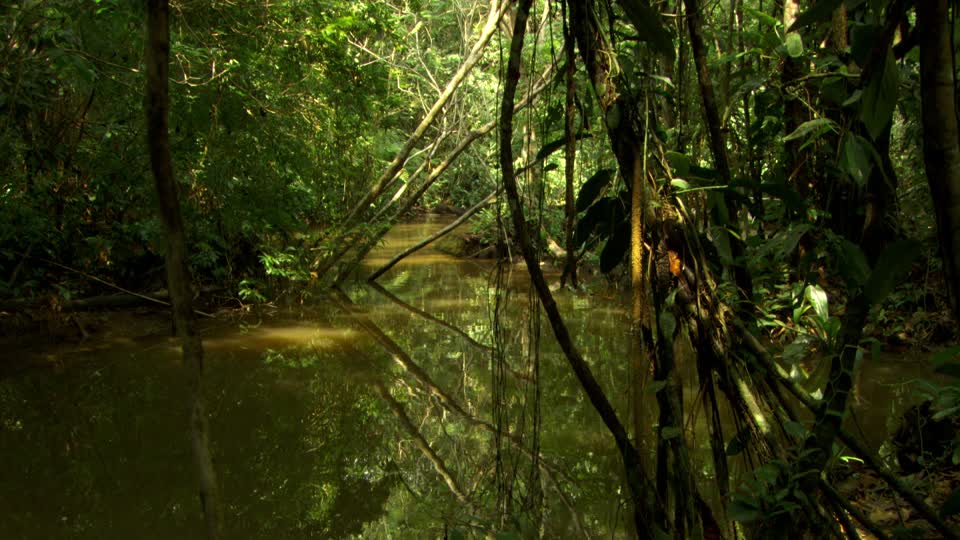
Varzea is a seasonal floodplain forest in the Amazon River basin inundated by Whitewater Rivers. During the rainy season, this area has the presence of fishes, birds, turtles and fertile soil in abundance, thus larger populations are found in the riverside areas of this region.
The world of Wajapi
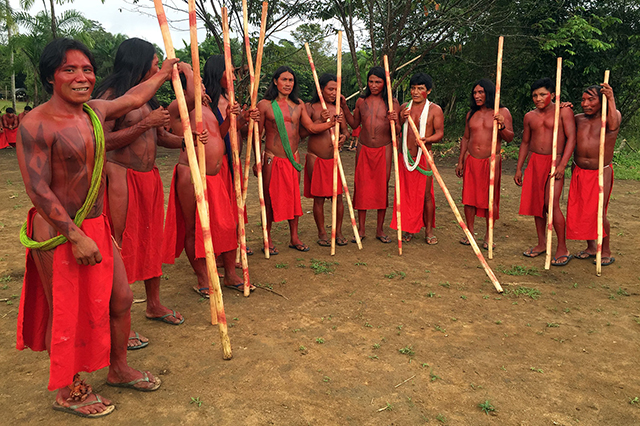
The indigenous people of Wajapi live in well conserved forests, close to the tributaries of Jari River in northeastern Brazil. Wajapi community people believe that animals of the forest look like animals but they are actually human beings with souls. Trees and most plants also carry human souls and only the shamans are able to communicate with them.
Life on dry land
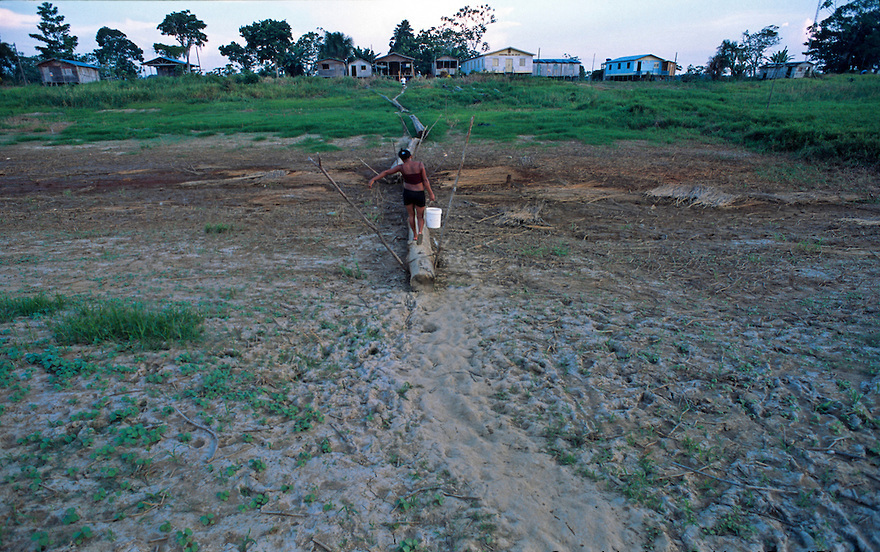
On the parts of Amazon rainforest that is not impacted by floods, known as terra firma, human groups living here principally crop manioc. They rely on slash and burn and shifting culture. Soon after the natural flora and fauna are cleared, rainforest soils no longer remain rich in nutrients and the crop yields drop quickly. Due to this, farmers have to clear new plots for their crops. Protein is thus mainly obtained from animals, nuts, fruits and seeds.
Religious beliefs of Amazonian people
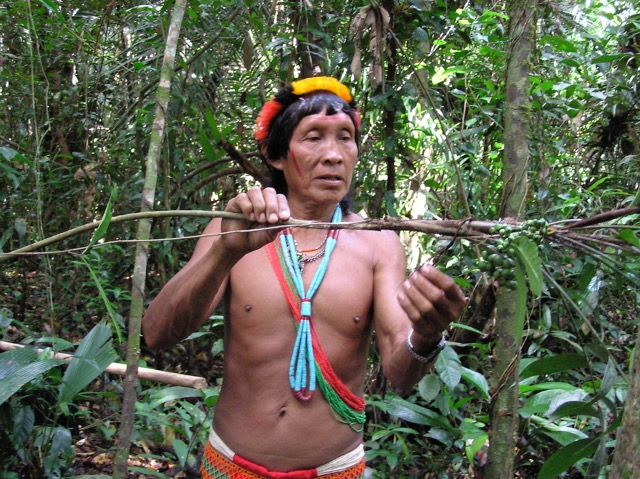
Amasina, a Trio shaman in Suriname and co-author on the Journal of Ethnobiology and Ethnomedicine paper (image)
The indigenous people of South America strongly believe in the spiritual world. Their spirituality exists in getting closer to plants that contain certain hallucinogens. Many indigenous groups consider shaman as the most important person in their religious beliefs. Shamans are believed to communicate with the spiritual world through plants and animals. They consider plants as priests or Brahmin. Being the representative of God’s knowledge on Earth, they carry powers that allow them to alter their state of awareness. This allows them to perceive their world in new and different ways and gain knowledge for healing the people.
From the authors
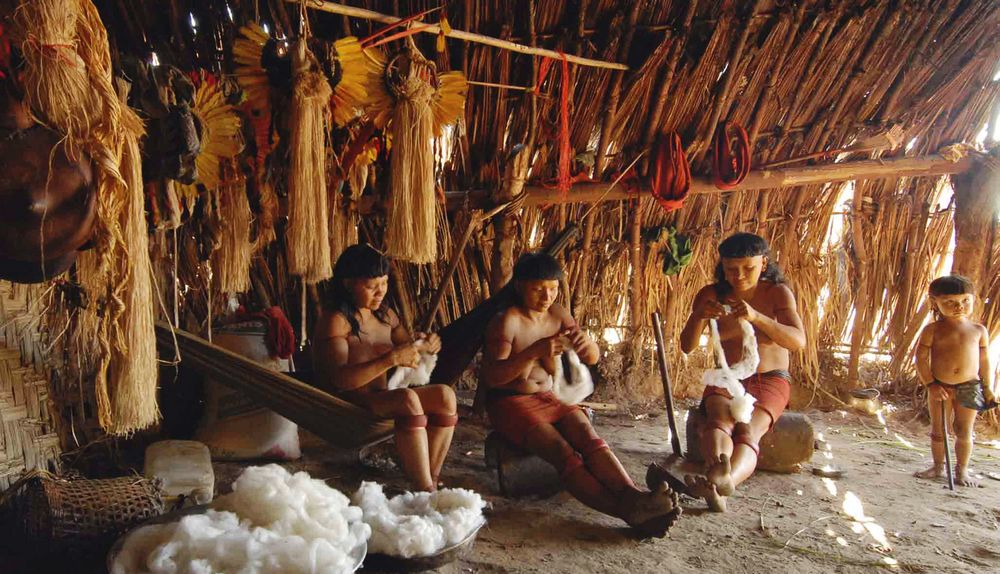
Amazon is not an untouched wilderness but a product that has extensively been managed by large human groups contrasts the view that Amazonian region was sparsely populated by the tribal groups who existed peacefully even in their surrounding hostile environments. This view is defended by Betty J. Meggers, who is the author of “Amazonia: Man and Culture in a Counterfeit Paradise” and the director of Latin American Program at the Smithsonian Institute’s Museum of Natural History in Washington. On the basis of the samples that she collected during 1960s, she concludes that the soil was so poor that it could not support extensive agriculture that was necessary for the establishment and maintenance of large communities. According to her, pre-Columbian Amazon was a pristine environment that had been altered by humans to some extent.
Another author, Michael J. Heckenberger said that ‘the complex of communities could be only one of the many complexes in the Amazon region.’ Archaeologists, since a long time have overlooked these societies because they did not build large cities and structures like those by Mayans, Incas or Aztecs. Since stone is not widely available in Amazon, they constructed their settlements with wood, clay, bones and other materials that would collapse very easily in the warm and humid climate of the rainforest. Thus, after the deterioration of their structures, Amazon dwellers disappeared into the jungle again.
Many Amazon researchers were deeply shocked when a network of 45 meters wide engineered roads was discovered connecting the villages and towns. The study was published in 2003 and it was conducted over a period of 10 years. Nineteen villages in the upper Rio Xingu region covering 1000 square kilometers consisted of 2,500 to 5,000 people.
The societies of Amazon rainforest could support large populations through carefully managing their surrounding environment. Instead of the single crop monoculture, that is highly popular in European farm system, farmers living here cultivated and managed entire ecosystem. Charles Mann, in his account of the pre-Columbian Indian societies explains
“Indians survived by cleverly exploiting their environment. Europeans tended to manage land by breaking it into fragments for farmers and herders. Indians often worked on such a grand scale that the scope of their ambition can be hard to grasp. They created small plots, as Europeans did (about 1.5 million acres of terraces still exist in the Peruvian Andes), but they also reshaped entire landscapes to suit their purposes… Unlike Europeans, who planted mainly annual crops, the Indians, he says, centered their agriculture on the Amazon’s unbelievably diverse assortment of trees: fruits, nuts, and palms.”
In the absence of benefits of iron tools and domesticated animals in Amazonian regions, it was very difficult and time consuming to clear and sow fields. As opposed to two or three years with standard low growing crops, Indians labored for twenty years on planting trees, which was ultimately more productive.
The early inhabitants of Amazonian region created orchards instead of fields, which actually served as a greater economy to them. By planting trees in fertile river basin, the benefits of rich soil quality could be reaped along with the deep reaching roots of trees that helped in the survival of agriculture in dry season and in periods of drought. Experts estimate that nearly 15% of lowland forests were organized for the benefit of humans. Thus, this concept of “built environment” sharply contrasts with the traditional version of a virgin territory.
Another archaeologist, Anna C. Roosevelt from the Field Museum of Natural History in Chicago, re-excavated the Amazonian site of Marajo with her team of specialists. They presented compelling evidences in support of the existence of more than 100,000 inhabitants and the site covered thousands of square miles. Rather than creating detrimental effects on the densely populated area, Marajo’s presence enriched the environment, reveals studies. This settlement has its traces left behind in the form of a series of raised lumps of Earth, which is still the most lush and diverse growth portion in the region.
Amazonians today
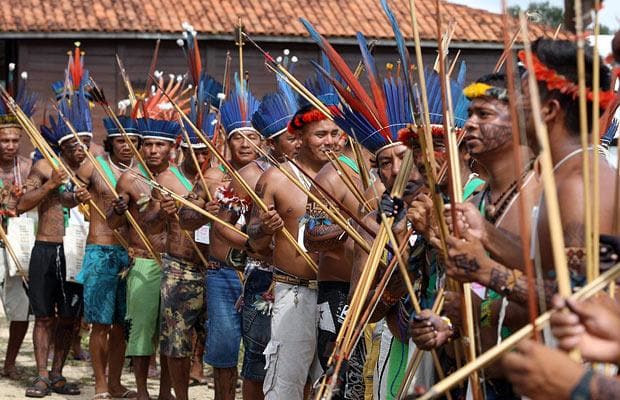
Despite the population decimation, native people still live in these rainforests. Instead of wearing the traditional loin garb, these people wear western clothes and use pans, metal pots, and modern utensils in their everyday lives. Some people also make handicrafts to sell them to tourists and others visit regularly to the city market for foods and wares.
The traditional nomad hunting and gathering practices are not used for obtaining food today. Cultivate of crops is the primary mode of obtaining food but hunting and fishing practices are used as secondary or supplementary methods. The families living here have two gardens- small house garden with many plants and a large plantation area, of about one hectare where bananas, manioc or rice are planted. The traditional methods of forest clearing and plantation with slash and burn are used today. Using these traditional approaches does not cause any damage to the forest.
Almost all Amerindians have adopted the modern methods of living with only some space for the traditional ways but there are still several dozens of people who live in voluntary isolation inside the forest. They are popularly known as the ‘unconnected tribes’ and they mostly live in the regions of Brazil and Peru.
The number of indigenous people living in the Amazon basin could not estimated exactly but estimates of 20 million people in 8 Amazon countries are classified as ‘indigenous’.
Popular Posts
Veronica Seider - A Superhuman With Super-Eye
Veronica Seider’s super power sounds like a plot of a film. Veronica has an eyesight that redefines the human eye capability. ...
Swati Bhandari
Most Notable Dead Bodies Left On Mount Everest
The world’s highest mountain – Mount Everest not only serves as an epitome of nature’s beauty, but it is also a warning t...
Kimberly Campbell
15 Black Female Bodybuilders With Insane Physique
Bodybuilding takes a lot of patience and hard work but in the case of women, it takes a lot more than that. Despite all the aesthetic hurdles that female bod...
Kevin Green







